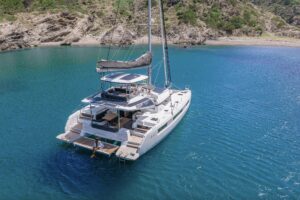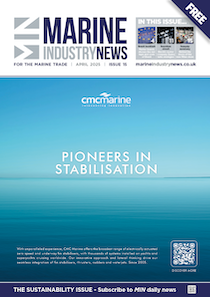New study shows microfibres stunt mussel growth
 Photo by Peter Secan on Unsplash
Photo by Peter Secan on Unsplash
A new study has demonstrated, for the first time, the effect of exposing juvenile mussels to polyester and cotton microfibres at environmentally relevant concentrations over a prolonged timescale.
The young mussels subjected to higher levels of plastic microfibres showed restricted growth, which could have compounding effects throughout the marine ecosystem as well as potential commercial implications.
The team, consisting of scientists from Plymouth Marine Laboratory, University of East Anglia and the University of Plymouth, exposed juveniles of the mussel species mytilus to three treatments of microfibre, which reflects both current and predicted future concentrations of polyester and cotton microfibres in the natural environment.
Studies suggest that as much as 4.8 to 12.7 million metric tons of plastic enter the global ocean every year. This is expected to rise as plastic manufacturing rates are forecast to increase. Fibres are one of the most common forms of microplastic identified in environmental studies, accounting for up to 91 per cent of the total identified microplastics in some studies.
Microfibres of 10–500 µm (0.01mm – 0.5mm) in size were used in this experiment, which was conducted within a controlled temperature laboratory with night and day cycles. Mussels were exposed to polyester microfibres at two concentrations, 8 and 80 microfibres per litre, and to cotton microfibres at 80 microfibres per litre. Mussels exposed to 80 polyester microfibres per litre were significantly smaller than the control mussels after 32 days exposure, and their growth rate was, on average, 36 per cent lower than the control mussels. Mussels exposed to cotton microfibres did not show a statistically significant decrease in growth in this experiment.
The team hypothesised that the observed reductions in mussel growth in response to microfibres could stem from a shift in their energetic budget. These changes could be caused by individuals either altering their feeding behaviours to avoid consuming microplastics, diverting energy away from growth into processing ingested microfibres or repairing damage caused by these microfibres.
Additionally, other toxicity studies show that microplastics can cause adverse health effects at the molecular and cellular level in adult mytilus and therefore, energy may be diverted away from growth and reproduction to compensate.
These results highlight the importance of conducting longer experiments when considering the impacts of microplastic on marine life. While the impact of microplastics on certain aspects of biological function can become evident over short timescales, the impact of environmentally relevant concentrations of microplastics on growth, reproduction, and survival, which have the greatest relevance to populations and communities, require far longer observation periods.
“As microfibres are so prevalent in the marine environment it is vital we try to understand their impact on different indicator organisms, such as the blue mussel which is a key marine species important for global food security,” says Christopher Walkinshaw, PhD student at Plymouth Marine Laboratory and the University of East Anglia, and lead author of the study.
“Reduced growth rates could alter the energetics of food webs, as smaller mussels are less nutritionally valuable, both to their predators in the natural environment and to us as consumers of seafood. Microfibres and other microplastics expose marine animals, such as mussels, to an additional risk in an environment already at risk from other challenges such as climate change.”
“Future research aims are to conduct a combined experiment investigating energy budgets and subcellular toxicity of microfibres over a similar exposure time, to study the reason behind the inhibited growth.”
Fibres that are less than 5mm are termed microfibres. These tiny fibres are predominantly generated from the fragmentation of textiles, stemming from the day-to-day use and washing of clothes, and from the weathering and abrasion of marine infrastructure, such as netting and rope.
Microfibres are typically composed of polyester, polypropylene or nylon. However, numerous studies also report the presence of naturally derived and semi-synthetic microfibres (e.g. cotton, bioplastic) in environmental samples, which have received relatively little attention compared to their plastic counterparts.
In 2022, MIN reported on the work of Cornish green technology company Cleaner Seas Group, which is developing a filter to help tackle microplastic pollution in the world’s oceans. The retrofit and integrated filter fits all washing machines and captures and recycles microfibres as small as one micron.











